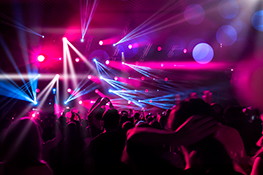Stage Lighting Secrets: Pro Tricks to Make Your Show Unforgettable
Mastering the Art of Light and Shadow
Stage lighting is more than just illuminating the actors; it’s a powerful storytelling tool that can evoke emotions, create atmosphere, and guide the audience’s eye. Professional lighting design transforms a performance from good to unforgettable. This article delves into the secrets seasoned lighting designers employ to craft captivating stage productions, revealing techniques you can use to elevate your own shows.
Understanding Color Temperature and its Emotional Impact
The color temperature of your lighting significantly impacts the mood. Cool blues and greens often convey a sense of coldness, isolation, or even melancholy, while warm oranges and ambers evoke feelings of warmth, comfort, and intimacy. Understanding the psychological impact of color is crucial for setting the right tone for each scene. Experiment with different color gels to fine-tune the emotional landscape of your performance.
The Power of Layering and Intensity
Avoid flat, even lighting. Professional designers layer different lighting instruments to create depth and texture. This involves using a combination of front, back, and side lighting to sculpt the actors’ bodies and highlight key features. Varying the intensity of each light source adds dynamism and draws attention where needed, creating visual interest and enhancing the storytelling.
Strategic Use of Gobos and Special Effects
Gobos, or gobo patterns, are metal stencils placed in front of lighting instruments to project images or patterns onto the stage. These can be incredibly effective in setting the scene, from creating a starry night sky to projecting architectural details onto a backdrop. Strategic use of special effects, such as strobes, fog machines, and moving lights, can further enhance the visual spectacle and elevate the dramatic impact of specific moments.
Beyond the Basics: Advanced Lighting Techniques
Explore advanced techniques such as backlighting to separate actors from the background and create silhouettes, or side lighting to highlight facial expressions and body language. Consider using color washes to transition smoothly between scenes or to emphasize shifts in mood. Mastering these techniques allows for greater control and creative expression.
Working with Your Space: Optimizing Lighting for Different Venues
The size and shape of your performance space dictate your lighting design. Smaller venues require a more focused approach, while larger spaces may necessitate more powerful instruments and careful placement to ensure even coverage. Understand the limitations and possibilities of your space to maximize the impact of your lighting design.
Collaboration is Key: The Importance of Communication
Effective lighting design is a collaborative effort. Open communication between the lighting designer, director, and actors is vital for achieving a cohesive vision. Regular discussions and rehearsals allow for adjustments and refinements, ensuring the lighting complements the overall production and enhances the storytelling.
Conclusion: Illuminate Your Vision
By mastering the principles of color temperature, layering, special effects, and collaboration, you can transform your stage productions into truly unforgettable experiences. Remember, lighting is not just about illuminating the stage; it’s about illuminating the story itself. Experiment, explore, and let your creativity shine through.
Keywords:
stage lighting, lighting design, theatrical lighting, stage lighting techniques, lighting effects, gobos, color temperature, lighting design tips, professional lighting, stage production, theatrical production, lighting secrets, lighting for theatre, event lighting


 Auditorium Construction Services
Auditorium Construction Services 